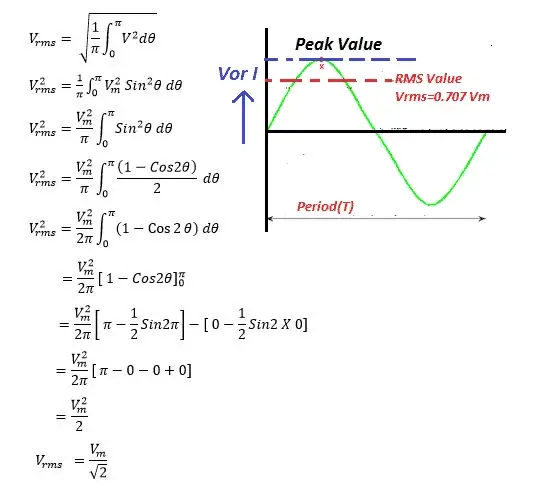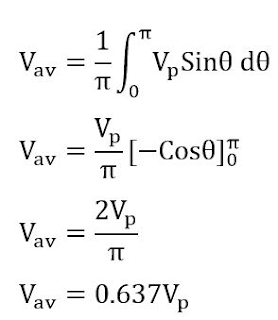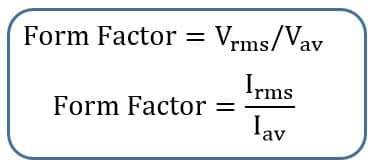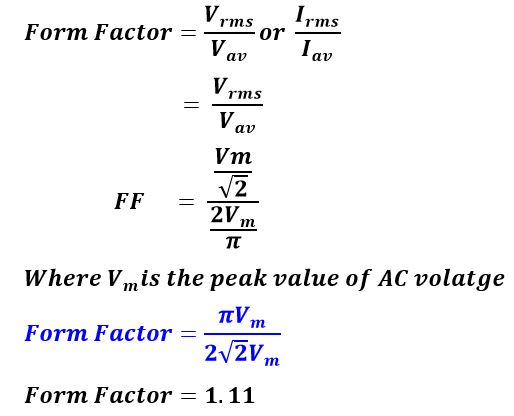What is Form Factor?
Definition: The ratio of the root mean square value to the average value of an alternating quantity (current or voltage) is known as the Form Factor.
The Form Factor is a very important parameter for knowing the perfectness of the waveform. Any periodic waveform has varying magnitude with time. The waveform attains maximum or peak value at a point in time. The direct current has its maximum amplitude at all the times i,e. It has a constant magnitude that does not change with time. Contrary to this, the instantaneous value of AC varies with time and attains maximum or peak value; again, the magnitude decreases.
Before conceptually understanding what the Form Factor is, let us understand the RMS and average value of AC.
RMS Value of AC
The root mean square value of an AC current is equal to the heating effect of the AC current and is equal to the heating effect of the DC current. The RMS value of AC is equal to the direct current, which, when passed through the resistor for a given period of time, will produce the same heating effect as produced by alternating current when passed through the same resistor for the same time. The root mean square value of a perfect sinusoidal AC voltage or current has a certain relationship with its peak or maximum value. The RMS value of the ac waveform is equal to Vp/√2 or Vm/√2. Where Vp and Vm are the peak or maximum values.
It is worth knowing how to calculate the RMS value of AC.
The RMS value of an AC voltage is given below.
Mathematical derivation of AC RMS Value

Now, we will calculate the average value of AC.
Average Value of AC
The average value of AC is equal to the steady current, which transfers the same amount of charge in a given time as transferred by an AC across the same circuit in the same circuit. The derivation of the average value of AC is given below.

Thus, the average value of AC is,

Form Factor Formula
The form factor is the ratio of RMS to the average value of AC, and mathematically, we can express the form factor as;

Form Factor Formula Derivation
The form factor of the ac waveform is equal to the ratio of the rms value to the average value. When we put the RMS and average values of AC in the form factor formula, we can find the value of the form factor.

💡The form factor value of the perfect sinusoidal AC waveform is 1.11.
Form Factor of Various AC Waveforms
The form factors of various AC wave shapes are given below.

Solved Problem on Form Factor
Q.1 Calculate the form factor of a pure sine wave with a peak value of 4.6 kV.
RMS value of a Sine Wave

The average value of a Sine Wave

The form factor of a Sine Wave

Importance of Form Factor
Electrical equipment designed to operate on sinusoidal AC must have the perfect sine wave. The deviation in the form factor value from 1.11 shows that the waveform is not sinusoidal and it is distorted. The distorted waveform generates harmonics in the system, causes excessive heating in the electrical network and equipment, and reduces the electrical efficiency. Therefore, the form factor of the sinusoidal wave should be 1.11.
Read Next:
Please I need this information to send to my email